Buyeo Neungsan-ri Ancient Tombs [UNESCO World Heritage] (부여 능산리 고분군 [유네스코 세계문화유산])
3.3 Km 15353 2020-03-16
61, Wangneung-ro, Buyeo-gun, Chungcheongnam-do
+82-41-830-2890
Hundreds of Baekje tombs are scattered across Buyeo. Among them, Neungsan-ri Ancient Tombs, which are close to Buyeo, have been relatively well preserved and are fairly large in size.
The Neungsan-ri Ancient Tombs were the royal tombs of the Baekje dynasty from 538 to 660 when the capital of Baekje was Sabi (now Buyeo). In the Baekje Gobun Miniature Museum at the entrance to Neungsan-ri Ancient Tombs, mockups and miniature tombs are on display with their cross sections exposed. Here, one can view all kinds of Baekje tombs including stone mounds of the Hanseong Era as well as those discovered in Buyeo.
Buyeo Naseong Fortress [UNESCO World Heritage] (부여 나성 [유네스코 세계문화유산])
4.0 Km 27294 2021-07-22
100-11, Dongmun-ro142beon-gil, Buyeo-gun, Chungcheongnam-do
+82-41-830-2623
Buyeo Naseong, also known as the Outer City Wall, was built to protect the capital of Baekje, Sabi. It has a x_height of about 8.4 kilometers. The wall surrouned Busosanseong Fortress and extended to the city of Buyeo.
The wall is one of the oldest walls along with Naseong in Pyeongyang and it is estimated to have been built around 538, when the Baekje capital was changed from Woonjin (current Gongju) to Sabi (current Buyeo). The wall of the fortress starts from the site where Dongmun (East gate) was located to the area of Geumgang River, made by piling soil up. However, only a few traces remain of its former glory.
For now, it leaves a blurry trail including a 20 meter area to the east of Cheongsanseong Fortress, Dongmun Bridge from Seokmok-ri, and an area from Pilseobong Peak to Yeomchang-ri. While the outer wall is sharply sloped, the inner wall was built with a gentle slope to make it easier for horses to reach the guard posts on the top of the wall. Inside the fortress, the palace of Baekje, government offices, houses, temples, stores and protected facilities can be seen. The entire structure of Naseong Fortress features Geumgang River in the south and west sides, providing a natural double-defense system. The wall was one of the important outer defense facilities along with Cheongsanseong and Cheongmasanseong Fortresses.
* Area: 554,591 ㎡
Buyeo Garimseong Fortress (부여 가림성)
9.6 Km 7147 2020-08-11
167, Seongheung-ro 97beon-gil, Buyeo-gun, Chungcheongnam-do
+82-41-830-2880
Garimseong Fortress is a stone fortress built on the lower reaches of the Geumgang River to protect Sabiseong Fortress, the capital of the Baekje dynasty. The fortress' parking lot is only 200 meters away from the southern entrance, allowing visitors to easily access and enjoy the view from this historical fortress. By ascending the stairway by the rocky cliff, a large tree comes into view. Known to be over 400 years old, this tree is called the "Love tree of Seongheungsan Mountain" and has even made an appearance in the drama "Seodongyo (200)." The fortress is also popular as a sunrise spot, serving as Buyeo-gun’s New Year's Eve festival venue.
Daejosa Temple (Buyeo) (대조사 (부여))
10.1 Km 20717 2020-01-08
112, Seongheung-ro 197beon-gil, Imcheon-myeon, Buyeo-gun, Chungcheongnam-do
+82-41-833-2510
Below Seongheungsanseong Fortress (built in 501 during the Baekje Kingdom) in Buyeo is an ancient temple called Daejosa (great bird temple). Inside the temple grounds stands a giant standing stone Buddha statue looking toward the east. The temple, which was founded during the 5th year of the Baekje Kingdom, has an interesting legend behind its origin.
According to the legend, an old monk fell asleep after praying under a large rock on the slopes of Seongheungsan Mountain. In his dream, a large bird glowing in gold flew in from the west and sat on the rock where Daejosa currently stands. While the bird continuoulsy flapped its wings, a ray of light shone on the rock and it was there that the statue of Avalokitasvara Bodhisattva appeared.
The old monk had the same dream at the same time for many days. He recounted his dream to the seongju (castle lord), who then reported it to King Seong of Baekje. The king interpreted the dream as a sign that it was the right time to move the capital of Baekje to Sabi (now Buyeo) and ordered the construction of a large temple at the location that appeared in the dream. The temple was so big that even at a hurried pace, it would still take 10 years to build. Workers had to work day and night, and every time the workers felt tired, birds would come singing to brighten up the atmosphere so that the workers can forget the fatigue and continue working. Hence, the temple was completed after only five years. Because of the golden bird, the temple was named Daejosa, literally meaning "temple of a great bird."
The rock on which Avalokitasvara Bodhisattva appeared in the dream was recreated as a stone statue of a Buddha. This standing stone Maitreya Bodhisattva statue is a fine work of sculpture which, along with the stone Bodhisattva of Gwanchoksa Temple (Treasure No. 218), is a representative heritage of the early Gorye period.
In front of Wontongbojeon Hall (a hall enshrining Avalokitasvara Bodhisattva) stands a pagoda. In the old days, the stone pagoda used to have only the cover stones but as the pagoda body stones were found, the structure was completely restored in 1975. This pagoda is assumed to have been built in the early days of the Goryeo Kingdom.
Chilgapsan Provincial Park (칠갑산도립공원)
13.3 Km 7439 2021-09-30
241, Janggok-gil, Cheongyang-gun, Chungcheongnam-do
+82-41-635-7690
Chilgapsan Mountain, located in Cheongyang-gun, Chungcheongnam-do, was designated as a provincial park in 1973. This mountain, 561 meters above sea level, has been called “The Alps of Chungcheongnam-do.” Chilgapsan Mountain area has many peaks, a thick forest and beautiful valleys. Each season has its own unique atmosphere. There are romantic cherry blossoms in spring, vivid green leaves in summer, autumn tints in fall and a snow-covered landscape in winter. Mountaineers visit all year round and can choose from seven courses.
Chilgapsan Ice Fountain Festival (칠갑산 얼음분수 축제)
14.2 Km 40085 2024-02-23
223-35 Cheonjangho-gil, Cheongyang-gun, Chungcheongnam-do
+82-41-942-0797
“Gather, fairyland friends!” Chilgapsan Mountain Winter Wonderland, a magical place where fairy-tale characters gather within an alpine castle crafted from a grand ice fountain. As night descends upon the Alps Village, the castle opens for nocturnal festivities, allowing visitors to don vibrant attires under the twinkling stars of the Milky Way. It’s an enchanting destination for children to create cherished memories and an idyllic setting for a romantic winter date for couples
Alps Village (알프스마을)
14.2 Km 15627 2024-02-23
223-35 Cheonjangho-gil, Jeongsan-myeon, Cheongyang-gun, Chungcheongnam-do
Chilgapsan Mountain, often referred to as the Alps of Chungcheongnam-do, rises majestically above Alps Village. Located in Cheonjang-ri, a name that evokes the imagery of reaching as high as the ceiling, this village is a getaway to the serene Cheonjangho Lake, together forming the picturesque Cheonjang-ri Alps Village. The area is well-equipped for visitors, boasting the Chilgapsan Mountain hiking trail, Korea's longest suspension bridge that crosses Cheonjangho Lake, a center for urban-rural community exchange, and a farm offering well-being experience. Alps Village is renowned for its annual Ice Fountain Festival, a winter highlight that draws visitors eager to behold the snow and ice sculptures and participate in a variety of sledding and ice bobsled activities. Beyond these chilly thrills, visitors can also engage in experiences like zip trekking and crafting traditional bottle gourd art.
Cheonjangho Suspension Bridge (천장호 출렁다리)
14.8 Km 17187 2024-02-23
24 Cheonjangho-gil, Jeongsan-myeon, Cheongyang-gun, Chungcheongnam-do
Built in 2009, this emblematic suspension bridge of Cheongyang stretches a total of 207 meters. Its most striking feature is a 16-meter-high main tower in the middle, ingeniously crafted to resemble Goji berries and red peppers, Cheongyang’s proud local produce. Below it is a narrow 1.5-meter-wide, 20-meter-long bridge, which starts to sway subtly both vertically and horizontally, offering a gentle thrill to whoever walks on it. This bridge is engineered to swing up to 30 to 40 centimeters, adding to the excitement of the crossing. Upon reaching the other side, visitors are greeted by an observatory and a trail leading up to Chilgapsan Mountain. For those who prefer a less strenuous journey, a leisurely stroll around Cheonjangho Lake towards Hwangnyongjeong Pavilion is a delightful alternative. The lake, overarched by the suspension bridge and nestled at the foot of Chilgapsan Mountain’s eastern reaches, presents a spectacular vista, rightfully counted among Cheongyang's most celebrated sights. The hiking trail ascends to the top of Chilgapsan Mountain, offering yet another perspective to appreciate the beauty of Cheonjangho Lake, the Cheonjangho Suspension Bridge, verdant forests, and charming valleys. An especially unique experience is visiting the Cheonjangho Suspension Bridge at night when it’s aglow, revealing a mesmerizing nocturnal allure.
Cheonjangho Lake (천장호)
14.8 Km 20502 2021-07-19
24-23, Cheonjangho-gil, Cheongyang-gun, Chungcheongnam-do
82-41-940-2723
Cheonjangho Lake is situated on the ridge of Chilgapsan Mountain about 11 kilometers away from the Chilgapsan Recreational Forest. This is reservoir of 1,200 hectares and is used to irrigate nearby farm land. Construction began in 1972 and took seven years to complete. The lake boasts clean water and an outstanding surrounding landscape. When it comes under fog or clouds, it creates a scenic view against the Chilgapsan Mountain landscape. In early spring, smelts are caught in abundance, drawing a growing number of tourists and anglers.
Baekje Cultural Museum (백제문화체험박물관)
14.8 Km 821 2024-02-23
43-24 Janggok-gil, Daechi-myeon, Cheongyang-gun, Chungcheongnam-do
Designed to mimic the traditional kilns of the Baekje period, the Baekje Cultural Museum is a unique space that blends historical elegance with immersive exhibits. It showcases five key masterpieces: the historic Baekje kiln site that’s over 1,500 years old, exquisite blue tiles, an evocative painting of Choi Ik-hyeon's exile, an intricate rubbing of the Confucius statue, and a resplendent golden turtle. Additionally, the museum offers a variety of interactive centers like a gold mine exploration area, an agricultural culture center, an exhibition hall that transports viewers back to the 1960s. There are also Han Sang-don Memorial Hall, Yoo Sang-ok Donation Room, and Jeongseung Park. On weekends, the museum becomes even more lively, offering hands-on activities such as pottery and cup making, as well as the chance to dress in traditional Baekje attire.
![Buyeo Neungsan-ri Ancient Tombs [UNESCO World Heritage] (부여 능산리 고분군 [유네스코 세계문화유산])](http://tong.visitkorea.or.kr/cms/resource/31/212931_image2_1.jpg)
![Buyeo Naseong Fortress [UNESCO World Heritage] (부여 나성 [유네스코 세계문화유산])](http://tong.visitkorea.or.kr/cms/resource/71/2725771_image2_1.jpg)

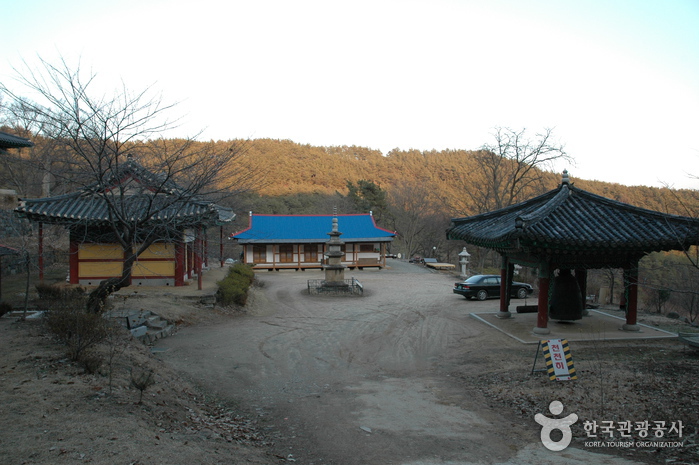
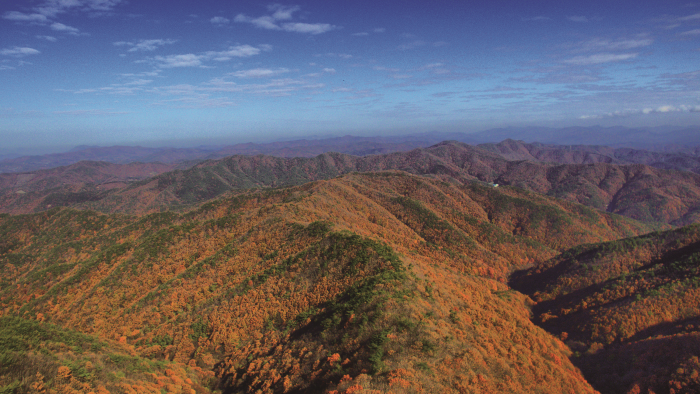
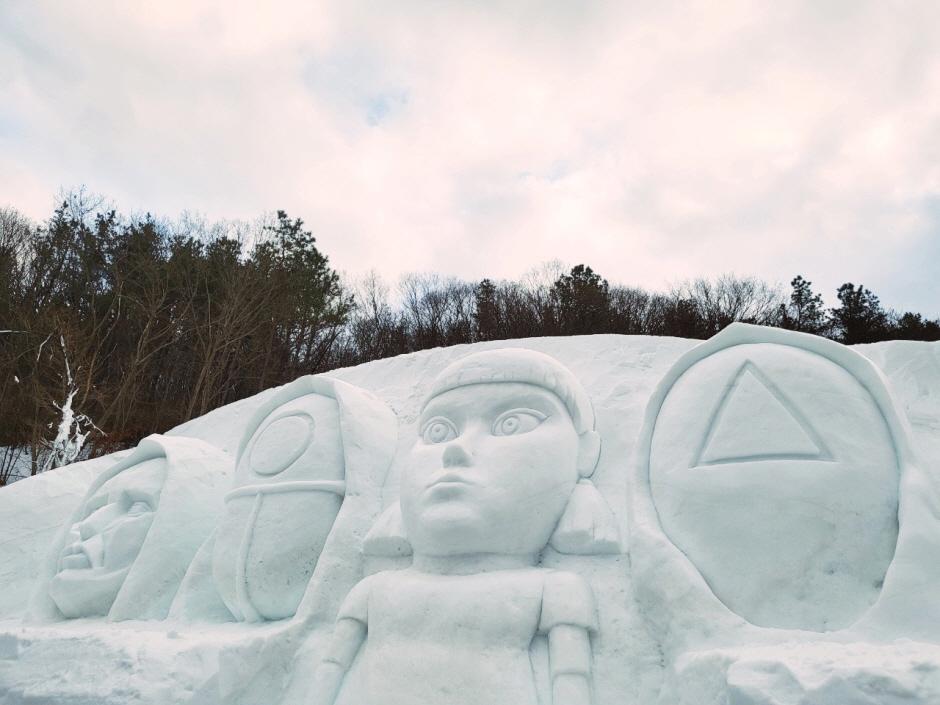
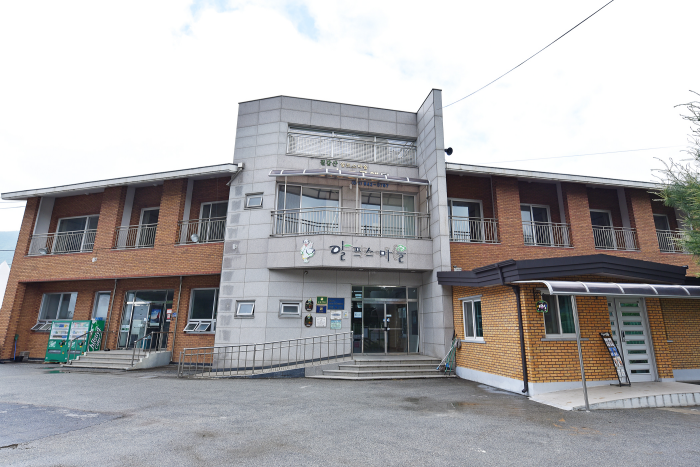
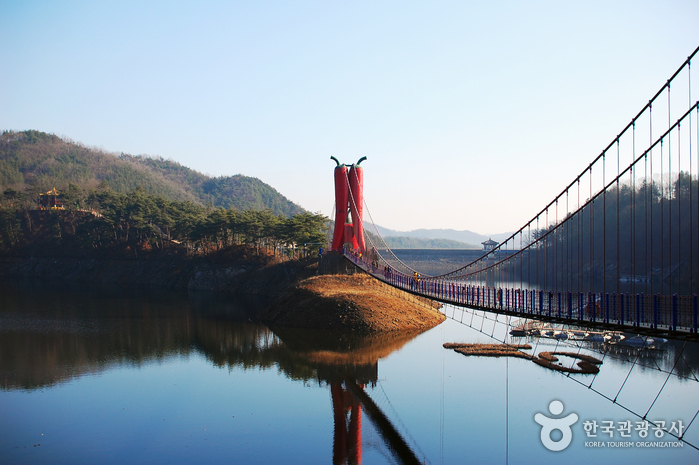
 English
English
 한국어
한국어 日本語
日本語 中文(简体)
中文(简体) Deutsch
Deutsch Français
Français Español
Español Русский
Русский